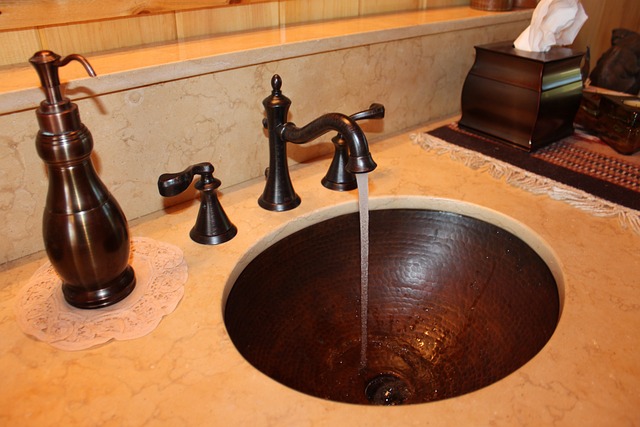The text explores common bathroom drain issues caused by hair, soap scum, and debris. Regular cleaning with hot water and detergent is recommended as a preventive measure. It guides readers on using tools like plungers, chemical cleaners, and natural remedies (baking soda, vinegar) for unclogging. Harsh chemicals should be avoided unless necessary, and professional plumbers can handle persistent clogs. Maintaining bathroom plumbing through covers, mindful drainage, and eco-friendly products is essential for hygiene and health.
Keeping your bathroom drains clear is essential for maintaining a hygienic living space. This comprehensive guide delves into the world of bathroom plumbing, equipping you with the knowledge to tackle common drain issues head-on. From understanding the causes of clogs to learning effective cleaning methods, we provide a step-by-step approach to unclogging your bathtub drain naturally or with simple tools. Discover preventive measures and when to seek professional assistance for a seamless bathroom experience.
Understanding Common Bathroom Drain Issues

Many bathroom drain issues stem from everyday activities and the buildup of common household items. Over time, hair, soap scum, and toothpaste residue can accumulate, forming a sticky clog that slows or stops water flow. This is often the first sign of a deeper problem—a partial or complete blockage in the pipes beneath your bathroom floor. Even small debris like cotton balls, Q-tips, or toys can cause significant clogs if flushed down the drain.
Understanding these common issues is the first step to effective maintenance and prevention. Regular cleaning with hot water and mild detergent can help dislodge minor blockages. However, for more persistent problems, it’s crucial to turn to appropriate tools like plungers or chemical cleaners designed for safe bathroom plumbing use. Identifying and addressing drain issues early not only ensures smooth water flow but also prevents more severe and costly damage to your bathroom’s plumbing system.
Tools and Materials for Effective Cleaning
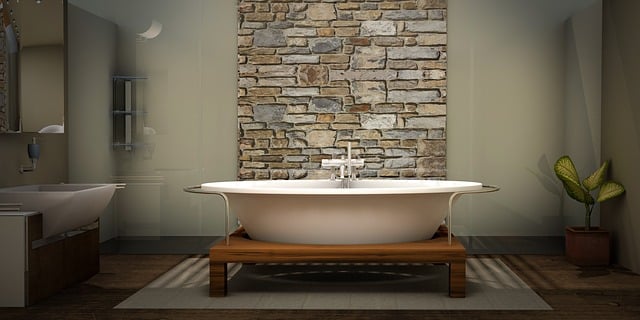
When it comes to cleaning your bathroom drain, having the right tools and materials is essential for effective results. Start with a standard plunger, which can clear minor clogs caused by hair or soap scum. For more stubborn blockages, consider investing in a drain snake or auger—a flexible metal cable that reaches deep into pipes to break apart obstructions. These tools are versatile and often come with different attachments for various drain types.
Don’t forget the importance of chemical cleaners like drain uncloggers or baking soda and vinegar solutions. These can dissolve greases, mineral deposits, and other debris that buildup over time in your bathroom plumbing. Always follow safety instructions when using chemicals and ensure proper ventilation to avoid inhalation of fumes. Additionally, a good old-fashioned wire hang (a long, thin piece of metal) can be useful for reaching and dislodging items stuck further down the drain.
Step-by-Step Guide to Unclogging a Bathroot Drain
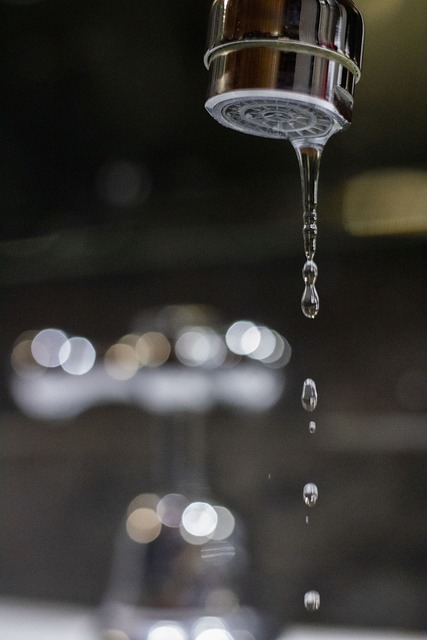
Unclogging a bathroom drain can be a common household chore, but it’s important to approach it systematically to ensure effective results and prevent further clogs. Here’s a step-by-step guide to tackle this task, focusing on your bathroom plumbing. Start by gathering a few simple tools: a plunger suitable for drains, a pair of plastic gloves, and hot water. Put on the gloves for protection. Next, place the plunger over the drain opening, ensuring it creates a tight seal. Then, pump the plunger up and down rapidly several times to create suction, which can dislodge any obstructions. After several pumps, release the pressure suddenly by lifting the plunger; this action aims to break apart any built-up debris.
Repeat this process until you feel resistance or notice water flowing freely through the drain. If the clog persists, try pouring a mixture of baking soda and vinegar down the drain—a natural cleaning agent that can dissolve hair and other common blockages. Allow the solution to sit for about 30 minutes before flushing with hot water. Remember, regular maintenance and preventing drain clogs are easier than unclogging them after they occur. Always be mindful of what goes down your bathroom plumbing to avoid obstructions.
Natural Drain Cleaning Remedies You Can Try
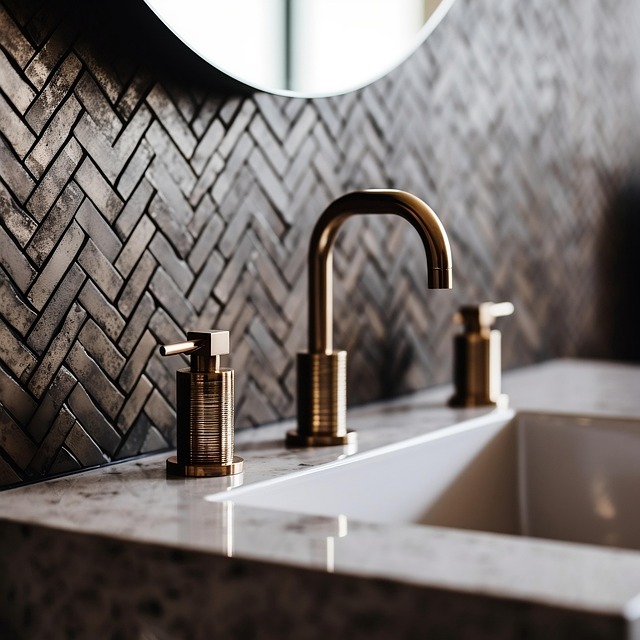
Unclogging your bathroom drain can be a common household chore, but it doesn’t always have to involve harsh chemicals. There are several natural remedies that can effectively clean and maintain your bathroom plumbing. One simple yet effective method is using baking soda and vinegar. Pour 1/2 cup of baking soda down the drain followed by 1 cup of white vinegar. The mixture will fizz and bubble, helping to break down any built-up gunk. Leave it for about 30 minutes and then flush with hot water. This natural combination is safe for pipes and eco-friendly.
Another kitchen ingredient that can come in handy is lemon juice. Cut a fresh lemon in half and squeeze the juice into the drain. The citric acid in lemons is an excellent natural cleaner. Leave it to sit for 10-15 minutes, then flush with hot water. For more persistent clogs, you can also try boiling water. Pouring a pot of boiling water down the drain regularly helps prevent hair and grease buildup. These simple, natural remedies can keep your bathroom plumbing in good condition without resorting to strong chemicals.
When to Call a Professional Plumber
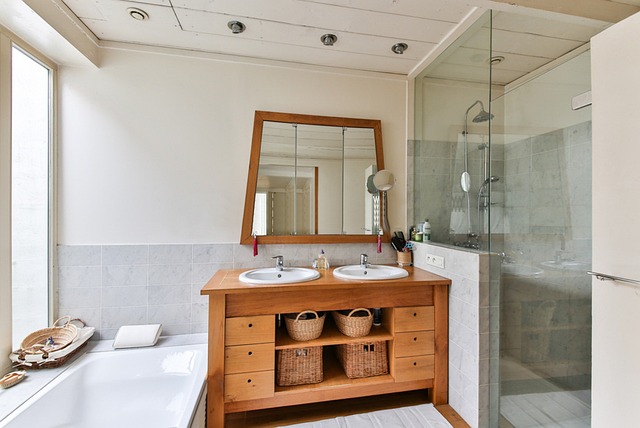
If you’ve tried home remedies and over-the-counter drain cleaners, but your bathroom plumbing still isn’t draining properly, it might be time to call a professional plumber. Clogged drains can be a persistent problem, especially in households with older pipes or multiple occupants. Repeated DIY attempts could damage the pipes or simply provide temporary relief.
Professional plumbers have the expertise and tools needed to tackle stubborn clogs effectively. They can inspect your plumbing system, identify the root cause of the blockage, and offer long-lasting solutions. From high-pressure water jets to advanced hydro-jetting technology, professional cleaners can clear even the most challenging drain obstructions, ensuring your bathroom plumbing functions optimally once again.
Maintaining Your Drainage System for Better Health
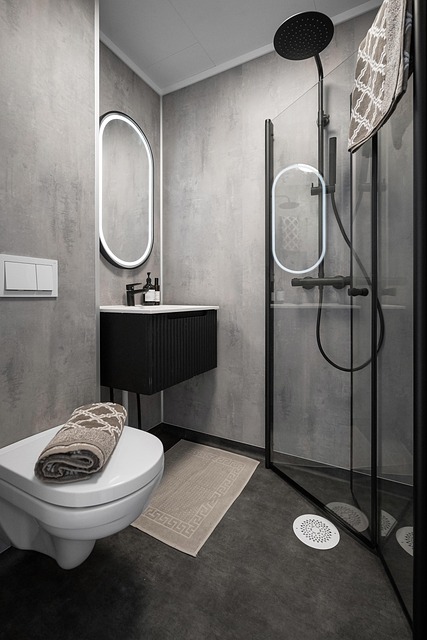
A well-maintained bathroom drainage system is not just about preventing clogs and unpleasant odors; it’s also crucial for maintaining better health. Regular cleaning and care can eliminate harmful bacteria, fungi, and other pathogens that thrive in stagnant water. Simple preventive measures like using drain covers to catch hair and debris, avoiding pouring grease or harsh chemicals down the sink, and regularly inspecting pipes for damage or corrosion can go a long way.
Moreover, understanding your bathroom plumbing is key. Familiarize yourself with the layout of pipes and drains to quickly identify potential issues. Regular maintenance includes cleaning out traps under sinks and toilets, where sediment and debris can accumulate, and checking for leaks that could lead to water damage and foster the growth of mold and mildew—all of which can negatively impact your health.
Preventive Measures to Keep Drains Clear

Regular maintenance is key to preventing clogged drains in your bathroom. One effective preventive measure is to install drain covers or traps to catch hair, grease, and other debris before they enter the plumbing system. These covers are relatively low-cost and easy to maintain, ensuring that only water passes through while blocking larger particles.
Additionally, being mindful of what goes down the drain makes a significant difference. Avoid flushing non-biodegradable items like wipes, sanitary products, or even certain types of food scraps, as these can accumulate in pipes over time. Using eco-friendly cleaning products and limiting the use of chemical cleaners also contributes to healthier bathroom plumbing by reducing the risk of damage to pipes and potentially harmful residues.
